The success of transformative programs currently under development at NASA, such as the Artemis mission to establish a long-term human presence on the moon and the Advanced Air Mobility project to integrate electric air taxis and drones into America’s airspace, will depend on breakthroughs in the technology of communication. To support the necessary innovations, NASA’s Glenn Research Center, in Cleveland, has brought together 25 research labs from across its campus in a dedicated state-of-the-art Aerospace Communications Facility. Designed by Ross Barney Architects and completed in late 2023, the 54,000-square-foot, $40.5 million building integrates stringent programmatic and budgetary requirements with the desire for supportive daylit workspaces and the need to meet ambitious sustainability targets.
The architectural concept and its expression are unabashedly pragmatic, says Carol Ross Barney, founder of Ross Barney Architects. “This is a building that’s driven by its function and by the need to be carbon- and energy-efficient,” she says of the net zero energy–ready facility—one designed to be highly efficient, so that if a renewable-power generation system were installed, it would produce at least as much energy as is consumed. “We’ve used what the building has to do to make it beautiful,” she adds.
The new facility reads as three volumes. The highest, a three-story block executed in concrete—precast for the walls and site-cast for the floor and roof—houses an antenna test range. Required to be completely shielded from radio frequency and electromagnetic interference, the concrete includes a proprietary conductive aggregate that acts as a Faraday shield, keeping high-frequency electromagnetic radiation from penetrating the structure. Making use of precast’s expressive potential, a graphic that layers mathematical equations like palimpsests on researchers’ chalkboards has been etched into the surface using a paper form-liner. The pattern embellishes the facade and reduces the block’s scale while signaling the building’s function to anyone familiar with the equations.
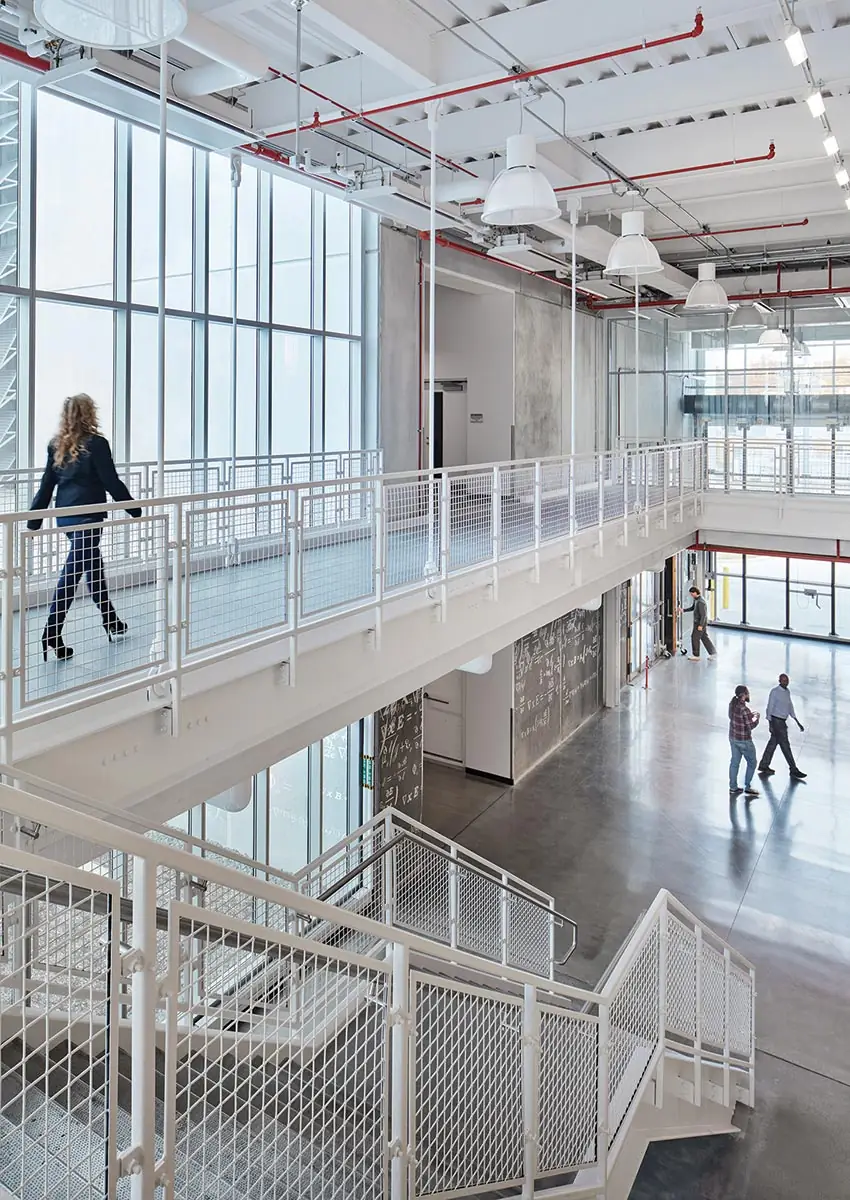
Equipment enters through an enormous bifold glass door (at far right in photo). Photo © Kendall McCaugherty, click to enlarge.
The graphic wraps into a glassy two-story volume that serves as a double-height lobby. Sight lines to the loading area, where enormous antennae dishes are brought into the testing bay through an 18-foot-square bifold glass door at one end of the lobby, make a show of the building’s ordinary goings-on.
Across the lobby from the testing bay, a two-story volume clad in dark blue corrugated steel houses research labs and collaborative and “hoteling” work zones (for space efficiency, there are no assigned desks or offices). These are organized to optimize daylighting and views into the tree canopy of a nearby ravine. On east- and west-facing glazing, a ceramic frit supplements shading from deciduous trees. On the south elevation, undulating perforated-aluminum shading devices provide glare-free daylighting. They also happen to look like radio waves.
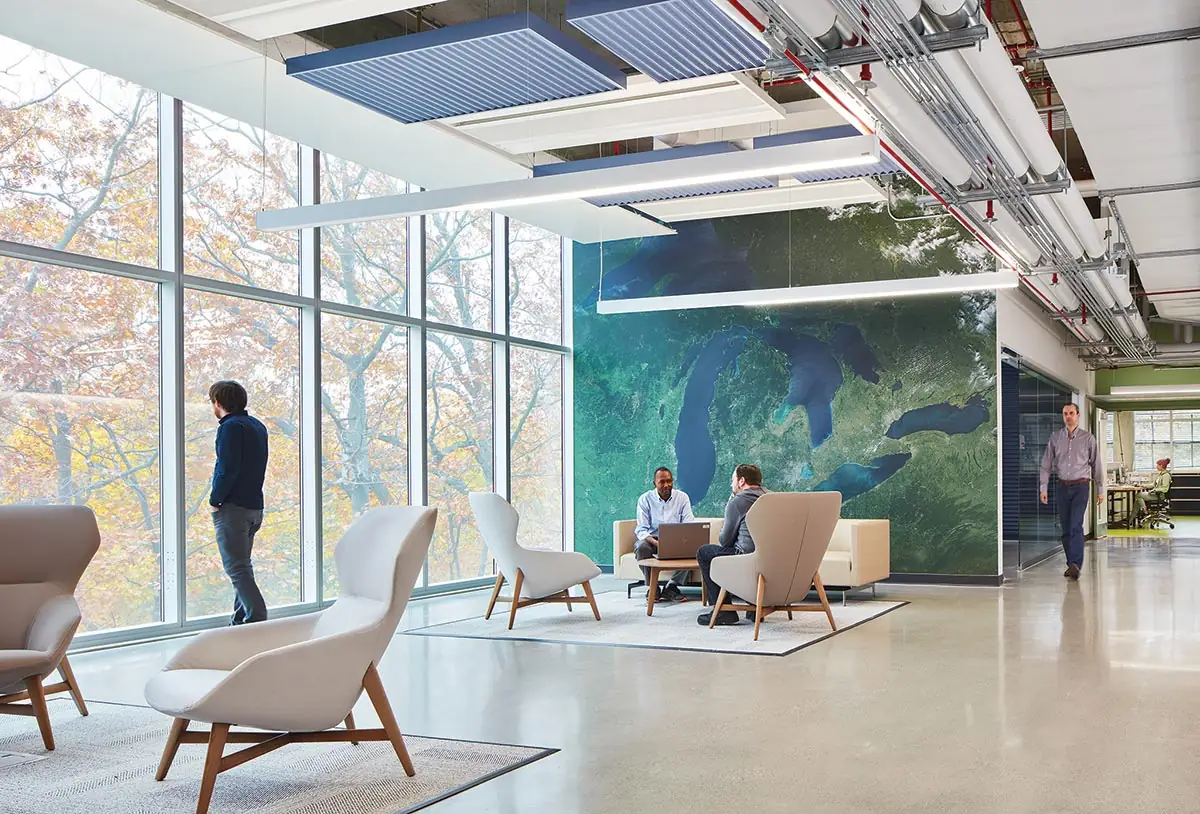
The building includes a variety of collaborative workspaces. Photo © Kendall McCaugherty
The design team integrated sustainability as a priority from the outset, selecting the building configuration based on iterative evaluations of the passive-energy performance of four alternative schemes. Among the guidelines and energy-performance benchmarks informing the design was the Net Zero Energy Buildings (NZEB) Roadmap prepared for NASA by the National Renewable Energy Laboratory, which provides guidance on the strategic, organizational, and tactical aspects of complying with the time-phased NZEBs requirement for new federal buildings that started in 2020. Referring to the Roadmap and also to the ASHRAE 90.1 efficiency standard, Labs21 Environmental Performance Criteria (a rating system specific to the laboratory building type), and LEED, the design team optimized the building envelope and other systems by targeting what Ross Barney principal Ryan Giblin calls “sweet spots between costs and sustainability.”
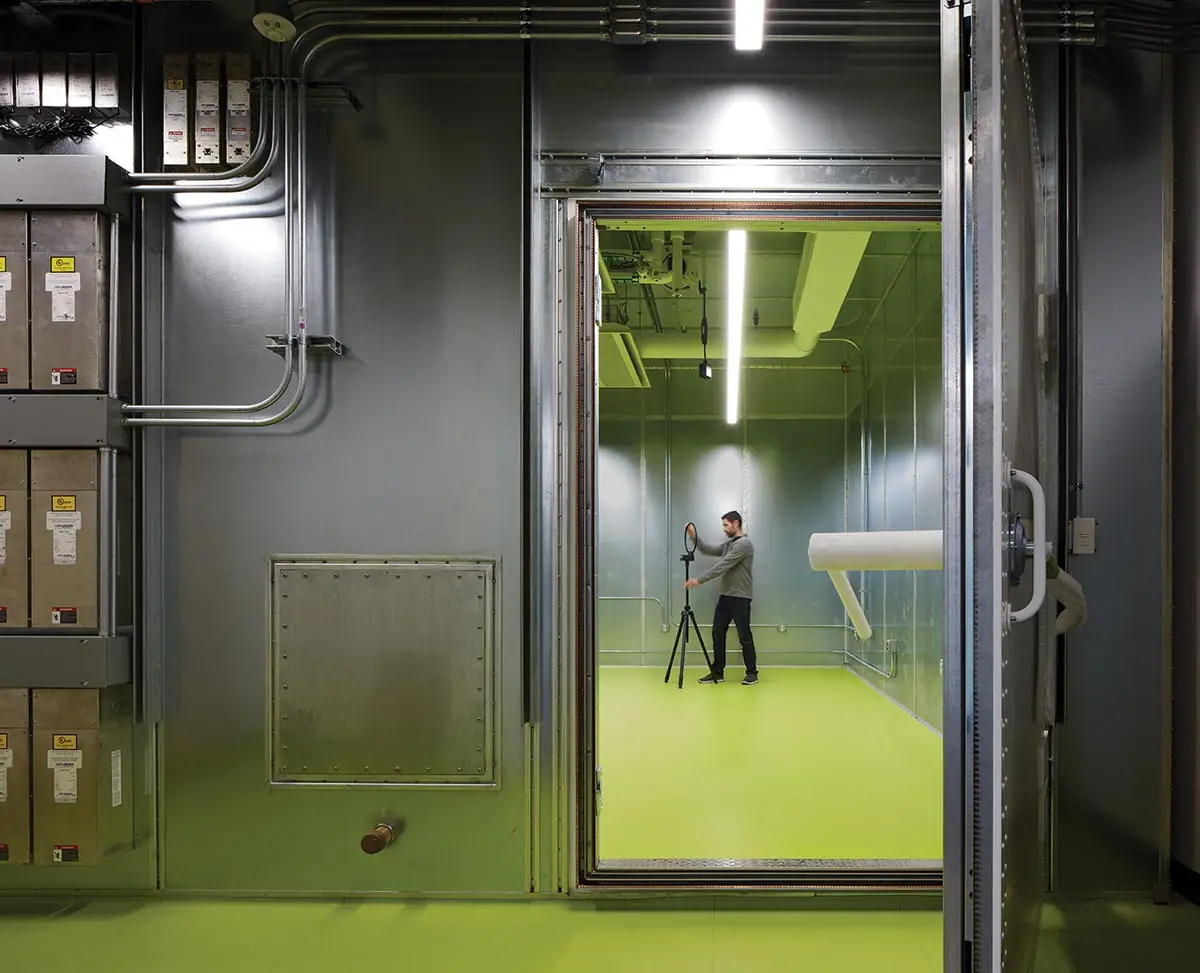
1
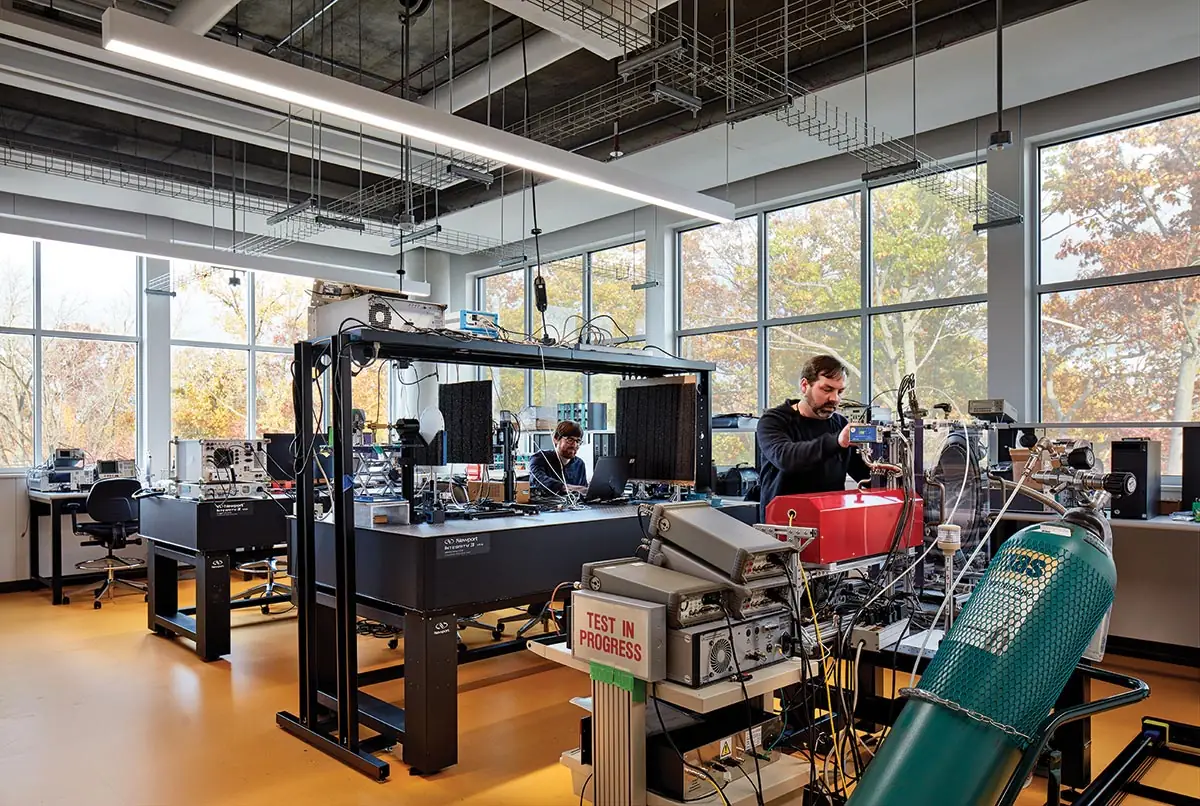
2
Some labs can be closed to all light or sound (1), while others have abundant daylight (2). Photos © Kendall McCaugherty
For example, the payback on R-70 roof insulation didn’t justify the surcharge over R-30. But the ceramic frit on east and west glazing and argon-filled, low-E glass and shading devices on the south proved out, allowing the mechanical system to be downsized. Ground-source heat pumps and chilled beams and radiant panels provide energy-efficient heating and cooling, as well as a low-dust environment for sensitive experiments, while a boiler for occasional supplemental heating and cooling (expected to be used about 5 percent of the time) obviated the need to oversize the geothermal system to cover those rare loads. Ample daylighting enabled a lighting design that is 67 percent more efficient than the ASHRAE 90.1-2013 benchmark.
Together, the selected “sweet spots” achieve an Energy Use Intensity (EUI) of about 59, which compares well with an EUI of about 90 for the ASHRAE 90.1 baseline building and about 84 for the projected result of the NZEB Roadmap.
Although the facility is designed to be able to meet its energy needs with on-site renewables, a net zero feasibility study found that, even over a 30-year time frame, photovoltaics would fall millions of dollars short of repaying their capital cost. This is because the NASA Glenn campus, a heavy user of power, has negotiated an exceptionally low rate with the utility. Unless that rate changes, instead of making an unrecoverable investment in generating its own energy, the facility will offset its power demands by purchasing renewable-energy certificates.
The Aerospace Communications Facility’s achievements—functional, environmental, and aesthetic—derive from, and express, a careful analysis of programmatic parameters, according to the architects. “One of the things that’s exciting about architecture is finding real beauty in everyday, run-of-the-mill, back-of-house functions,” says Ross Barney. “It takes a long time to distill all of these different facts and needs, but when you work on a design that way, the rewards are immense.”
Click plan to enlarge
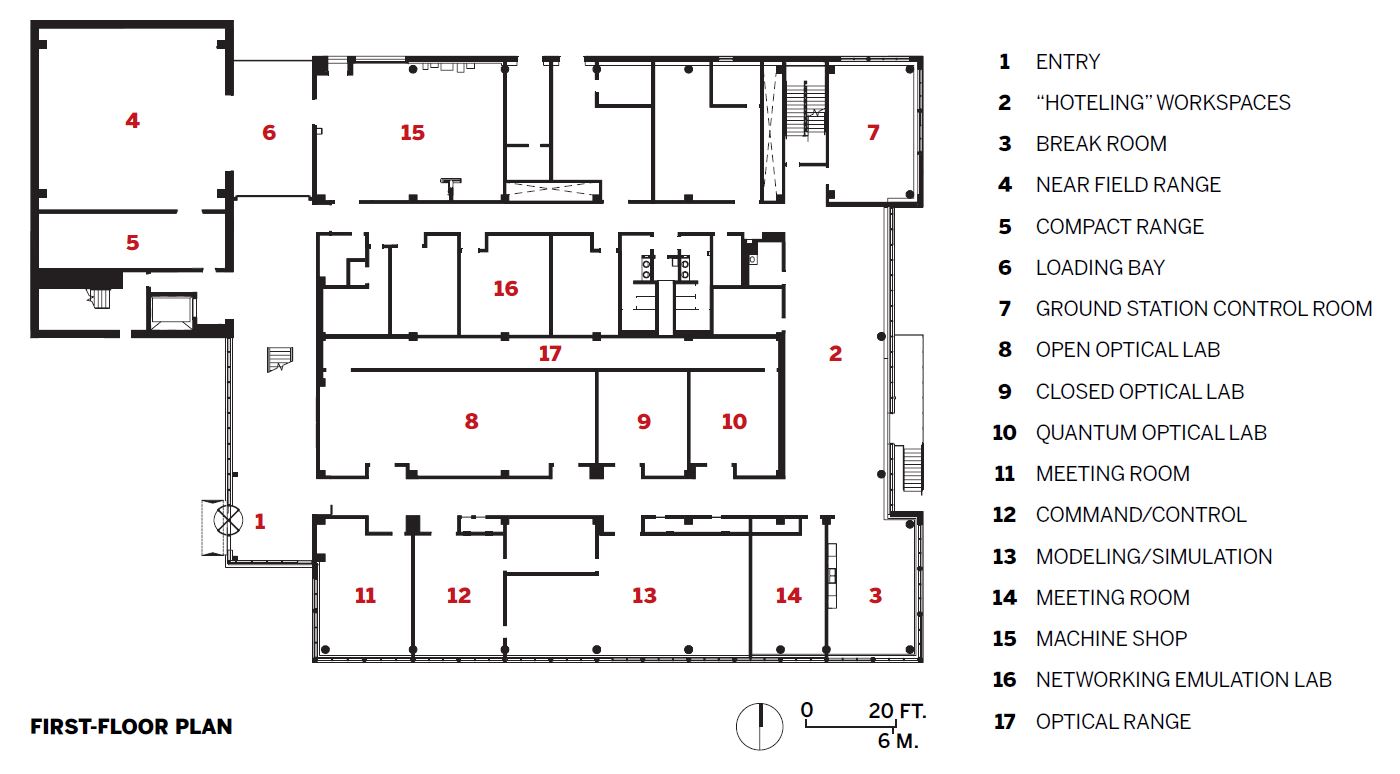
Join RECORD on April 17 at the Massachusetts Institute of Technology’s MIT Media Lab for Sustainability in Practice, a special half-day event with featured speakers including Carol Ross Barney, Mario Cucinella, Felix Heisel, and David Lake and Ted Flato.
Credits
Architect:
Ross Barney Architects — Carol Ross Barney, design principal; Ryan Giblin, principal in charge; Mordecai Scheckter, project manager; Shinya Uehara, director of design; Ryan Docken, Itzi Velazquez-Becerril, Youngjae Lee, Ross Barney, designers; Misa Inoue, landscape architect
Consultants:
Thornton Tomasetti (structural), Environmental Design Group (civil, environmental), dbHMS (m/e/p, fire), Threshold Acoustics (acoustical), HERA Laboratory Planners (lab planning)
General Contractor:
The Austin Company
Client:
National Aeronautics and Space Administration
Size:
54,000 square feet
Cost:
$40.5 million
Completion Date:
November 2023
Sources
Metal Panels:
Centria
Curtain Wall:
Kawneer
Rainscreen:
Knight Wall Systems, Hunter Panels
Roofing:
Elevate EPDM
Precast Concrete:
High Concrete Group, Omni-Threat Structures, Graphic Concrete
Glass:
Viracon, TGP


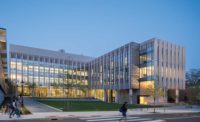
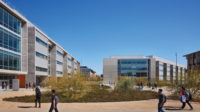
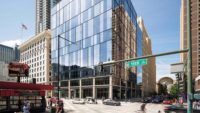
Post a comment to this article
Report Abusive Comment